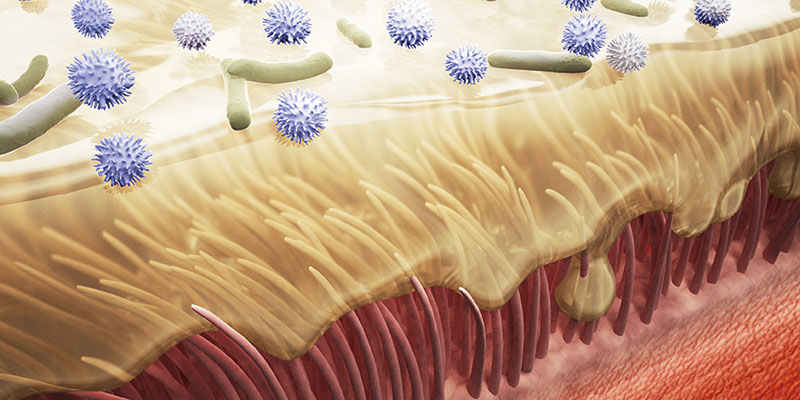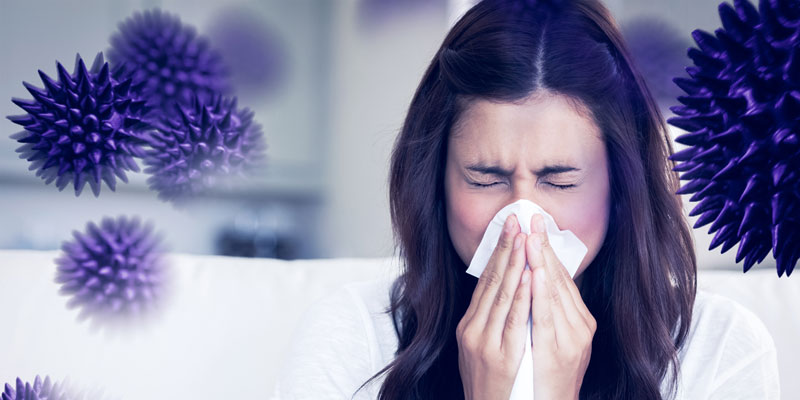
Low humidity and its
affect on our immune system
The nose and throat is our body's first line of defence in the fight against pollutants contained in the air we breathe. Their job is to purify and humidify the air before it enters more sensitive parts of our respiratory system and does us real damage.
A central part of this defence mechanism is a layer of tiny hair-shaped structures, called cilia, inside our respiratory tract and a thin membrane of mucous that covers them. Airborne pollutants, such as viruses and bacteria, are captured by this sticky mucous membrane and removed from the air. The tiny cilia whip back and forth many times per second to transport the mucous and its freight towards our throats. It is then swallowed and any pollutants destroyed by our digestive system.
If the air we are breathing in is below 40%RH (relative humidity) over a prolonged period of time, this mucous membrane layer dries out. This can cause damage to the cilia, inhibits our ability to filter pollutants from the air we breathe and leave us susceptible to airborne infection.

Mucous membranes in our respiratory tract trap airborne pollutants and tiny cilia transport them to our pharynx and digestive system, where they are destroyed.

In low humidity environments below 40%RH our mucous membranes dry and this "mucociliary clearance" process is impaired. This leaves us more susceptible to airborne infections, like the flu or common cold.
Kudo 2019
This Yale study showed that low humidity reduces the immune system's defenses against the influenza virus.
Read moreRitzel G 1966
Study of child absenteeism due to colds from two kindergartens with different humidity levels
Read moreGreen G 1975
Absenteeism was monitored in Canadian schools, alongside %RH, to see if any correlation existed between humidity and illness.
Read moreSale C 1972
Study of respiratory infections in nursery/kindergarten school children (2.5-6yrs) in humidified and non-humidified buildings.
Read moreGelperin A 1973
Study of respiratory illness in Army recruits accommodated in barracks with and without humidity control.
Read moreGreen G. 1981
Monitored staff absenteeism across three hospitals alongside their indoor humidity levels.
Read moreEwert G 1965
Observational study of how long it took tracers placed inside the human nose to travel 2mm at varying levels of air humidity.
Read moreTaylor S, Hugentobler W. 2016
Studied the correlation between environmental conditions in patients' rooms and the occurrence of healthcare associated infections.
Read moreSalah et al 1988
Study showing how dry air affects our mucociliary clearance, which is our respiratory system's main defense against airborne infection.
Read more